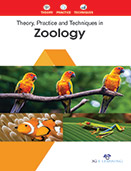Agriculture and Life Sciences

Zoology is significant for many reasons. For one, the study of animals and communities delivers understanding into how “life” works, and, accordingly, how we work. The higher mammals give especially useful understanding into the human world. Many Zoologists are directly associated with the conservation of endangered species; the maintenance of biodiversity is deliberated by many to be crucial to our survival. Animals also have a great impact on our lives; they provide us with food, with companionship, and with a sense of wonder. These are just a number of the reasons why understanding animal life is important to humans. Many diseases are due to animals which cause and transmit them the drugs are tested on animals before using them on human beings. Similarly, much of our knowledge of human physiology and surgery has come from experiments and dissections of other animals. The study of zoology is therefore very helpful to a medical man in curing the diseases and performing lifesaving surgical operations.
This book “Theory, Practice and Techniques in Zoology” presents a history of the scientific understanding of animals, discussing such topics as classification, animal behavior, menageries and zoos, genetics, and mythology. The text starts with theories of origin of life. Furthermore, it classifies groups of biological organisms on the basis of shared characteristics and giving names to those groups. A chapter on genetics presents the study of biological inheritance, examining a wide variety of inherited traits, from the ability to bear large numbers of fruit in trees, to eye color in mammals. It closes with a chapter on basics of developmental biology.
Emphasizing the principles of evolution and zoological science, this text describes the diversity of animal life and the interesting adaptations that enable animals to live so many ecological niches.